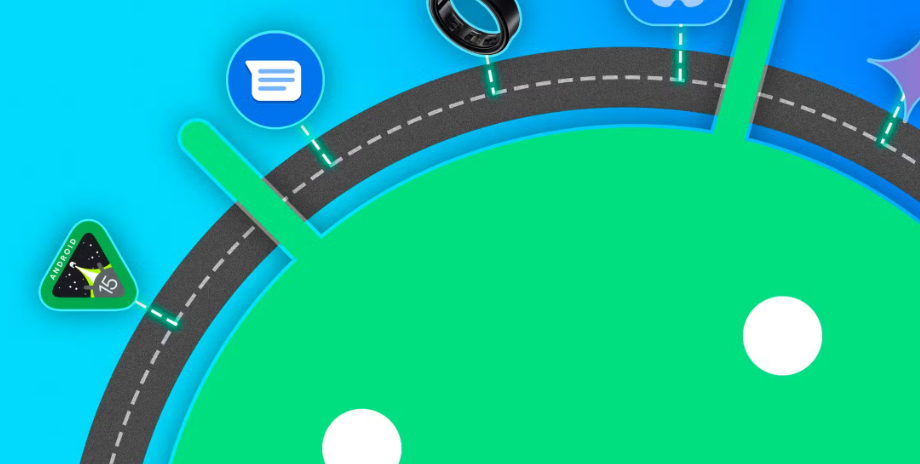The Android operating system has come a long way since its inception in 2008, evolving into one of the most dominant mobile OS platforms globally. Over the years, Android has undergone significant transformations, from interface changes to hardware advancements, and even reshaping the entire mobile ecosystem. As we step into 2024, it’s worth reflecting on some of the most important milestones that have shaped Android into the powerhouse it is today.
In this article, we’ll take a closer look at 10 crucial milestones in Android’s history, each representing a key point of innovation or change that pushed the platform forward. These milestones are not just technical achievements, but also cultural and industry-changing moments that have influenced not only Android but the entire mobile world.
1. The Launch of the First Android Phone: T-Mobile G1 (2008)
A Game Changer for Smartphones
The first Android phone, the T-Mobile G1, launched in 2008, was an industry-shifting event that marked the beginning of a new era for smartphones. This device, made by HTC, was the first to use the Android operating system. While the G1 may seem basic by today’s standards, it introduced several groundbreaking features that would go on to define the Android experience.
- Touchscreen and Physical Keyboard: The G1 combined a 3.2-inch touchscreen with a physical QWERTY keyboard, making it one of the first devices to cater to both touch and physical typing preferences.
- App Market: One of the most important features of the G1 was the Android Market, now known as the Google Play Store, where users could download apps directly to their devices. This laid the foundation for the vast app ecosystem Android enjoys today.
The launch of the T-Mobile G1 was not just about a new phone, but about the birth of a platform that would take on established players like Apple and Nokia.
2. The Rise of the Google Play Store (2012)
Expanding the Ecosystem Beyond Devices
In 2012, Android took a crucial step forward with the rebranding and expansion of the Android Market into the Google Play Store. The transition from Android Market to Google Play Store wasn’t just about a name change; it signified a fundamental shift in Android’s ecosystem strategy.
- Diverse Content: The Google Play Store was not limited to apps but expanded to include movies, music, books, and even magazines. This move helped Google compete with Apple’s iTunes and set Android up as a comprehensive digital ecosystem.
- Developer Incentives: Google began offering developers new tools, including better distribution channels, analytics, and monetization options, which spurred a rapid increase in app development for Android devices.
By 2012, the Play Store had become a thriving marketplace, with millions of apps available for download, cementing Android as a viable platform for both users and developers.
3. The Introduction of Android Ice Cream Sandwich (2011)
A Unified Interface and Usability Overhaul
Android 4.0 Ice Cream Sandwich (ICS) was released in 2011 and was a game-changer in terms of both design and functionality. This version of Android marked the beginning of Google’s initiative to provide a more unified experience across all Android devices, with a focus on improving usability, performance, and aesthetics.
- Holo Design: The Ice Cream Sandwich update introduced the “Holo” design language, a fresh and modern look for Android. This was a significant departure from the earlier, less cohesive visual styles.
- Better Performance: ICS brought significant improvements to Android’s performance, making devices run faster and smoother.
- Facial Recognition Unlock: One of the standout features of ICS was the introduction of facial recognition to unlock the device, setting a trend for future biometric security features.
Ice Cream Sandwich was a pivotal milestone that helped Android mature as a platform and gained more attention from developers and consumers alike.
4. Google Acquires Motorola Mobility (2012)
Strengthening the Hardware-Software Integration
In 2012, Google made one of its most strategic acquisitions by purchasing Motorola Mobility for $12.5 billion. This move was significant not only because of the hardware potential it brought but also because it showed Google’s intent to improve its integration between hardware and software.
- Patent Portfolio: Motorola’s large portfolio of patents helped Google defend Android against legal challenges, particularly from Apple and Oracle.
- Google’s First Flagship Devices: Following the acquisition, Google launched the Moto X series, which was one of the first smartphones designed with significant input from Google itself. This was a precursor to the Pixel series, which would later become the gold standard for Google’s vision of Android.
Though Google later sold Motorola to Lenovo in 2014, the acquisition had long-lasting effects on the way Google approached hardware, influencing its Android and Pixel strategy.
5. Android Lollipop (2014): Material Design and Enhanced Notifications
A New Design Language and Notifications Overhaul
Android 5.0 Lollipop was a landmark release in 2014 for two main reasons: the introduction of the Material Design language and an overhaul of the notification system.
- Material Design: This was a major visual redesign that sought to unify the user interface across all Android devices, focusing on bold colors, grid-based layouts, and responsive animations.
- Improved Notifications: Lollipop revamped the notification center, allowing users to interact with notifications directly without needing to open apps. This made multitasking on Android easier and more intuitive.
Material Design was eventually adopted across Google’s other products and services, creating a cohesive brand identity that Android users continue to benefit from today.
6. Android 6.0 Marshmallow and the Introduction of Google Now on Tap (2015)
Enhancing Personalization and Permissions
Android 6.0 Marshmallow, released in 2015, continued Google’s push for making Android more efficient and user-friendly. Some of the key features introduced with Marshmallow helped enhance the overall Android experience for both users and developers.
- App Permissions: Marshmallow introduced granular app permissions, allowing users to choose which permissions they want to grant to each app. This was a much-needed improvement in terms of privacy control.
- Google Now on Tap: This feature enabled Google Now to provide contextual information based on the current screen or app you were using, taking Google’s virtual assistant experience to the next level.
Marshmallow was a critical update that set the foundation for privacy improvements and integrated AI tools that Android would continue to develop in the following years.
7. The Google Pixel Launch (2016)
Google’s First “Made by Google” Phone
The launch of the Google Pixel in 2016 marked a turning point for Android as Google began producing its own hardware for the first time in the form of the Pixel and Pixel XL. These phones showcased Google’s vision for Android in a way that was previously unachievable with third-party devices.
- Pure Android Experience: The Pixel devices offered a “stock” version of Android without any bloatware, showcasing Google’s unfiltered Android experience.
- Artificial Intelligence: With the Pixel, Google integrated its Google Assistant in a big way, making AI an integral part of the Android ecosystem. Google also introduced superior camera capabilities with the Pixel, thanks to advanced software processing.
The Pixel marked the beginning of a new phase for Android, with Google taking more control over both hardware and software, offering users a streamlined, consistent experience.
8. Android 9 Pie and the Introduction of Gesture Navigation (2018)
A New Era of Android Navigation
With the release of Android 9 Pie in 2018, Google took a bold step toward simplifying Android’s user interface and enhancing the way users interacted with their devices.
- Gesture Navigation: Android Pie introduced gesture-based navigation, replacing the traditional navigation bar with swipes. This change was designed to make the experience more fluid and immersive, anticipating the removal of physical buttons and the rise of bezel-less phones.
- Battery and Performance Improvements: Android Pie also introduced “Adaptive Battery,” a feature that uses machine learning to prioritize power for apps that are used most frequently, prolonging battery life.
This version of Android marked the beginning of a shift toward a more intuitive, minimalist user experience.
9. Android 10 and the Move to More Privacy Controls (2019)
Privacy Became a Central Theme
In 2019, Android 10 was released with a big focus on user privacy. With increasing concerns over data security and app permissions, Android 10 introduced several features that gave users more control over their personal information.
- Dark Mode: Android 10 introduced a system-wide dark mode, reducing eye strain and providing an aesthetically pleasing alternative for users.
- Location Privacy Controls: Android 10 allowed users to control how apps access their location data, providing more transparency and control over what data apps could collect.
The emphasis on privacy and security in Android 10 reflected a broader shift in the tech industry towards data protection and ethical usage of user data.
10. Android 12 and Material You (2021)
Customization and Personalization Take Center Stage
Android 12, released in 2021, took personal customization to a new level with the introduction of Material You, a new design language that emphasizes user personalization.
- Material You: This feature allowed users to customize the color palette of their phone’s interface based on their wallpaper, creating a personalized and dynamic look.
- One-Handed Mode: Android 12 also introduced a one-handed mode, making it easier to use large devices with a single hand.
Android 12’s emphasis on customization and user control marked a departure from earlier versions of the OS, which were more rigid in their design choices.
Conclusion
Looking back at these 10 key milestones in Android’s history, it’s clear that the platform has continually pushed the boundaries of what’s possible with mobile technology. Each of these milestones represents a critical moment in Android’s evolution, and together they illustrate why Android remains the most widely used operating system in the world today.
From the introduction of the first Android phone to the cutting-edge features of Android 12, Android in 2024 stands on the shoulders of these innovations. As we look ahead, Android is poised to continue shaping the future of mobile technology, and we can only imagine what milestones will come next.



